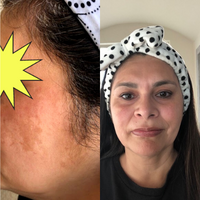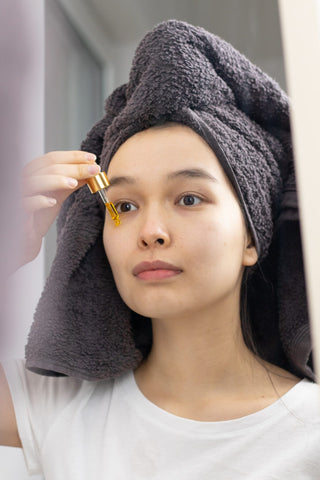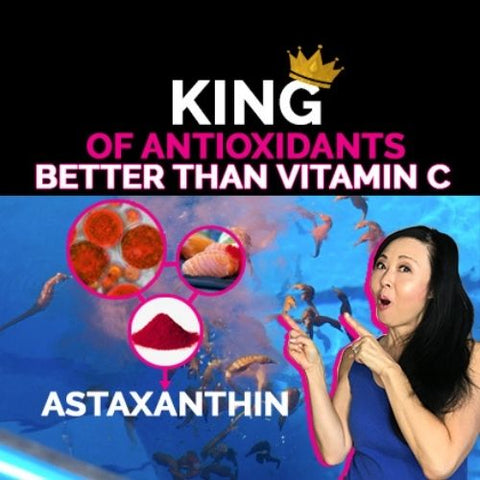Treating hyperpigmentation naturally (look for these ingredients): If you have been following along in our hyper-
pigmentation series involving how to fade age spots, acne scars, and melasma, you are aware that treating hyperpigmentation can be a frustrating process.
Hyperpigmentation: Understanding How it Affects your Skin Type
3 Truths of Melasma-CAN YOU CURE MELASMA?
Hyperpigmentation Treatments for Dark Skin: Black Skin Asian Skin and Fitzpatrick 4-6
My Skin Care Routine For Hyperpigmentation
Before I proceed with this blog article, here is my ***DISCLAIMER***: all the ingredients I will be listing are NOT by any means the complete list of ingredients. These are simply ones that have shown in clinical studies to help treat hyperpigmentation.
Based on my professional experience treating a vast array of different skin types and skin conditions including hyperpigmentation, acne, and other skin conditions for over eleven years, NOT every skin type will respond the same with these ingredients.
Just because some of these ingredients have been clinically proven to lighten hyperpigmentation, this does NOT mean that every ingredient will work on your specific type of hyperpigmentation .
The only way to know is to test it out on yourself. Based on my experience, I can only tell you what has worked for the majority of my clients.
Please also remember that these clinical studies have been done paired with PROFESSIONAL Treatments. The best and most effective results were show when they were paired with specific lightening products performed at home.
If you choose to ONLY treat hyperpigmentation naturally and NOT have professional treatments, results will not be as effective or as fast.
***Although some of these ingredients have shown positive results in fading hyperpigmentation, some of these ingredients still need further testing.***
Soy- derived from the soybean plant
-one of the more common skin lightening ingredients in moisturizers
-Works by preventing the melanosomes (this is where melanin is created, stored and transported) to the keratinocyte
-known as a tyrosinase inhibitor
According to one clinical study, 14 out of 16 women (some were of hispanic or caucasion origin) applied soy extrac to their melasma once a day for 3 months. The average reduction of the hyperpigmentation was about 12%.
Another study was done on 44 “celtic complexion men” ( fair, prone to redness, sensitive, prone to dryness) and showed signs of improvement.
Niacinimide-
-known as Vitamin b3
-antioxidant
-similar to soy that it also prevents melanin formation
–Benefits of Niacinimide for Skin: 6 Anti Aging Benefits of Niacinimide for Skin
Niacinimide Serums:
Paula’s Choice Niacinimide Serum
The Ordinary Niacinimide Serum
Ellagic Acid-
-polyphenol found in trees, nuts, fruit such as: Strawberries, Cherries, Pomegranates
-antioxidant
-reduces tyorsinase activity need for melanogenesis
According to some clinical trials (although further studies are still needed) , some results are showing better results than Kojic acid or Arbutin.
Arbutin-
-Natural derivative of hydroquinone
-derived from plants:
–bearberry-This exfoliating scrub/mask in one has many lighteners and brighteners
-blueberry
-cranberry/rasberry
-Tyrosinase inhibitor
This is also in the sunscreen that has natural lighteners and brighteners
Kojic Acid-
-has antioxidant properties
-Tyrosinase inhibitor
-ROS (Reactive Oxygen Species) Scavenger-ROS can cause :
DNA Damage
RNA Damage
Apoptosis -Cell death
**According to some studies, Kojic Acid seemed to be more effective at skin lightning when other ingredients that increased skin penetration (such as Vitamin C, glycolic acid,etc) was ALSO used.
One study found that Kojic Acid plus hydroquinone (1-2%) (OTC percentage) alone or with .1% betamethasone valerate or a combination of all three worked more effectively than just Kojic acid alone.
This was performed on 80 multiethnic patients with hyperpigmentation.
Common Natural Ingredients used in Hyperpigmentation Products for Hyperpigmentation Treatments:
Treating hyperpigmentation naturally with Azelaic acid, green tea, and ascorbic acid is also quite common.
A clinical study showed when 29 women were treated with vitamin C over 12 weeks using Iontophoresis, there was a clinically significant reduction in hyperpigmentation.
When used in conjunction with the treatment of using mandelic/malic acid based skin care regimen, along with a UVA/UVB sunblock, there was a 75% improvement in abnormal pigmentation. 25% improvement showed in 32 patients and more than 50% improvement in 22 patients.
3 Ingredients that Lightened Hyperpigmentation but still need further Clinical Results:
Treating hyperpigmentation naturally could also involve using some of these ingredients that have been in clinical studies and have shown to be effective in lightening hyperpigmentation but still need further testing are:
Licorice Root Extract-a test was was done with skin types of Fitzpatrick 1-4 . The results showed that it was 16x greater that hydroquinone and my reduce UVB induced hyperpigmentation.
Lignin Peroxidase-enzyme derived from tree fungus. This enzyme oxidizes and breaks down melanin. According to one clinical study, this performed superior to HQ (hydroquinone) including the improvement of skin clarity and texture, and smoothed out roughness and improved overall appearance.
Turmeric-A Spice. The active ingredient -curcumin- hydrophobic polyphenol that show up by yellow pigment. This has anti inflammatory and anti-carcinogenic properties.
An en-vivo study suggested that it might increase apoptosis (cell death) in human melanoma cells.
Study #1-Split faced study among caucasian women that compared results for fine lines and wrinkles . Using Turmeric extract with Niacinimide cream vs Niacinimide alone.
The result was the an improved texture and reduction of fine lines and wrinkles when the turmeric plus the niacinimide cream was used.
Study #2-involved Chinese women- the formulation improved areas of hyperpigmentation by 14-16%.
Aloesin-Tyrosinase inhibitor derived from the aloe vera plant. This showed promising results when paired with Arbutin.
MulberryExtract-This helps with inhibiting tysosinase activity which reduces melanin formation.
The active component is Mulberroside F . The leaves from Mulberry trees are used to feed silkworm in East Asian Countries.
This leads me to wonder about the 18 amino acids in the silk powder in the translucent rice powder. I wonder if this contributes in any way to help keeping hyperpigmentation at bay, in addition to the phytic acid from the rice.
Follow us @:
Boutique https://goseechristybeauty.com/
Instagram:https://www.instagram.com/GoSeeChristy/
Facebook: https://www.facebook.com/goseeChristy…
Twitter: https://twitter.com/goseechristy
Pinterest: https://www.pinterest.com/goseechristy/
Sources:
https://www.ncbi.nlm.nih.gov/pmc/articles/PMC5843359/




